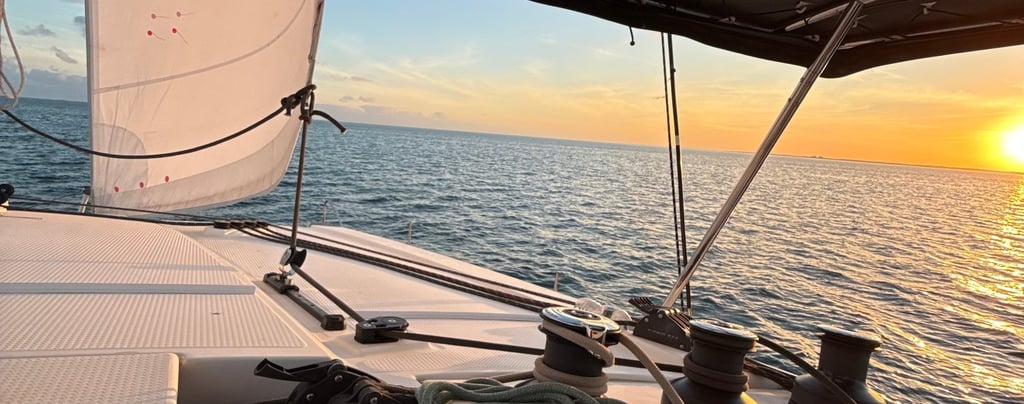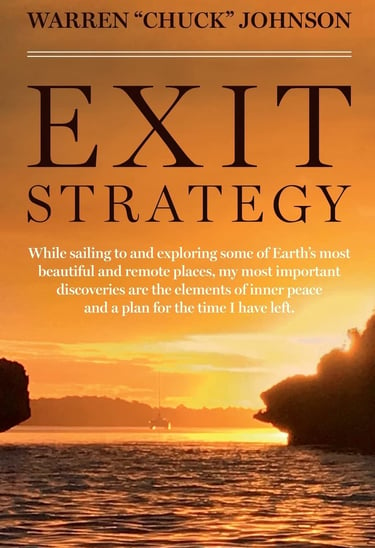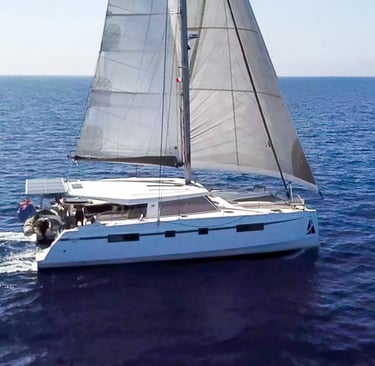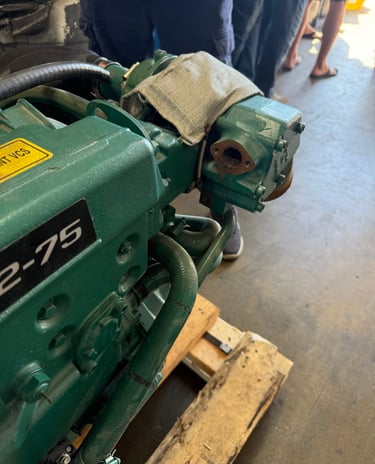Preparing For My Journey Across the Pacific Ocean
While doing the trip sounds fun, the reality is that it took a lot of preparation to be ready to set sail. My preparation consisted of research, studying, training, medical and emergency preparation and more!
2/21/20254 min read


The Reality of Preparation: More Than Just Setting Sail
While the idea of sailing across the Pacific sounds like a dream—endless blue horizons, remote islands, and the freedom of the open sea—the reality is that getting to the starting line took an immense amount of preparation. The journey to readiness involved extensive research, training, medical and emergency planning, and more. Every step was essential to ensuring that when I finally set sail, I could do so with confidence and competence.
A major part of my preparation was researching the areas I planned to explore, the boat purchase process, and learning from those who had already undertaken similar voyages. I read countless books on offshore sailing, passagemaking, and seamanship, but reading alone wasn’t enough—I took it a step further by connecting directly with the authors of these books, including seasoned sailors like Chuck Johnson and David Ruiz. These conversations provided invaluable firsthand insights that no book could fully capture, from anchorage tips to real-world problem-solving strategies at sea.
Researching the Journey
One of the most influential resources in my journey was Chuck Johnson’s book, Exit Strategy. This book provides a wealth of knowledge on long-term cruising and the challenges that come with it. Beyond the book, Chuck was incredibly generous with his time, offering guidance and support as I prepared for my own journey. I highly recommend his book to anyone considering a similar adventure—it’s a must-read for those looking to transition from land to sea with confidence.
Chuck Johnson’s Support & Exit Strategy


The Boat Purchase Process
Finding the right boat wasn’t just a matter of picking something that looked good; it required meticulous research and due diligence. I had to assess different makes and models, learn about potential maintenance pitfalls, and understand what systems were critical for long-term cruising. The process was as much about finding the right fit for my journey as it was about ensuring the vessel was seaworthy and well-equipped for an extended voyage.
Sailing Preparation


To prepare for handling my boat, I immersed myself in structured training courses. I completed ASA 102, 103, 104, 105, and 114, each adding another layer of knowledge and skill to my sailing foundation. One of the most valuable experiences was chartering a catamaran for a week with a training captain who coached me in real-time, refining my decision-making, navigation, and maneuvering skills. In addition to these formal certifications, I took numerous ASA short courses to deepen my understanding of seamanship.
Mechanical/Electrical Preparation
A crucial aspect of my readiness was ensuring I could handle maintenance and repairs at sea. I attended Just Catamarans' Diesel Days, a fantastic hands-on workshop where I learned to maintain and troubleshoot my boat’s engines and other crucial systems. Knowing how to diagnose and fix issues on the water can make the difference between a minor inconvenience and a major crisis, and I highly recommend this course to anyone considering serious cruising. Chad runs the training and I cannot recommend him enough as a teacher.
Beyond training, I invested in a vast inventory of spare parts, tools, and backup systems. Everything from fuel filters to rigging hardware needed careful planning. Having the right parts onboard means being prepared for unexpected failures, which are inevitable during long passages.


Medical & Emergency Preparation
Being far from immediate medical care meant I needed to be as prepared as possible for handling emergencies on my own. I took First Aid and CPR classes to cover the basics, but I didn’t stop there. I completed a Wilderness First Responder (WFR) course, which taught me how to manage medical situations in remote environments with limited resources.
Stocking a well-equipped medical kit was another critical aspect of preparation. My kit includes antibiotics, pain medication, and even anesthesia, along with suturing supplies—which meant I had to learn how to suture properly. These precautions are not just for my safety but also for anyone I might meet along the way who may need help in remote locations.
While preparing for hand on treatment was key, it's also important that we can get professional help anywhere on the globe. Insurance was an incredibly difficult to navigate as there isn't really a "Cover All Sailing the Globe Insurance". Many insurances market nomad coverage but I found most required a primary insurance in the fine print, would not cover evacuation, or wouldn't allow you the choice as to where to get treatment. I ended up choosing a mix and match between GEOBlue Global as my primary, Garmins SAR and DAN Membership. The truth is if something serious happens its likely that no one will wait on approval from Garmin or DAN to get Search and Rescue but it is nice to have. Make sure to read the fine print, most of these complicated insurances require a specific communciation and process to get any coverage.
The Journey Begins
Looking back, the preparation phase was as much a part of the adventure as the voyage itself. Every book, course, and conversation built the foundation for what’s ahead. While the ocean will always throw surprises my way, I feel ready to embrace the challenges, adapt, and most importantly, enjoy the journey.
Sailing isn’t just about the destination; it’s about the knowledge, resilience, and confidence gained along the way. Now, with my preparation behind me and the horizon ahead, it’s time to put everything I’ve learned into practice.
